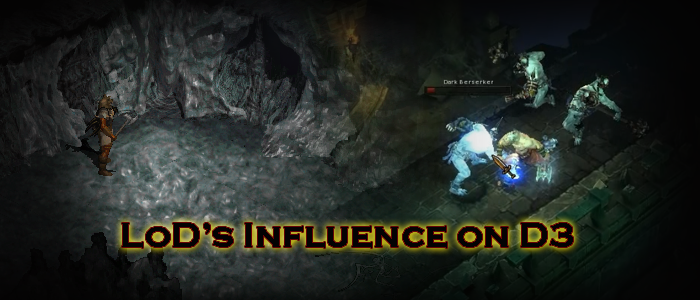
 Diablo II is no exception. There were probably dozens of ideas that just never made it off of the drawing board for one reason or another. However, while many of these things may have been cut from the original release, expansions packs offer developers a chance to bring some of these ideas back and even possibly add a few new ideas. With
Diablo II is no exception. There were probably dozens of ideas that just never made it off of the drawing board for one reason or another. However, while many of these things may have been cut from the original release, expansions packs offer developers a chance to bring some of these ideas back and even possibly add a few new ideas. With  Lord of Destruction (LoD), a fifth Act was added that offered a variety of many new mechanics and design to the game. Many of these ideas helped bring depth and more variety to Diablo.
Lord of Destruction (LoD), a fifth Act was added that offered a variety of many new mechanics and design to the game. Many of these ideas helped bring depth and more variety to Diablo. The aim of this article is to not only highlight some of these changes, but most importantly, make notice of these features' influence on Diablo III. Many of the changes added to Act V of Diablo II can be seen in
 Diablo III. Having more time and money for this project, they were able to apply many of these changes to the whole game and even develop the ideas even further in many cases.
Diablo III. Having more time and money for this project, they were able to apply many of these changes to the whole game and even develop the ideas even further in many cases. Starting off, there was some graphical advancement in Diablo II. In Act V, our heroes are taken to
 Harrogath where they will venture up
Harrogath where they will venture up  Mt. Arreat to defeat
Mt. Arreat to defeat  Baal. In order to give this environment a look of grandeur and height, backgrounds were greatly improved upon. While standing on the mountain side, you could see villages and other peaks below you (pictured below on the left). This small but important detail helped add depth to the environment compared to the closed of dungeons and walls surrounding the previous areas.
Baal. In order to give this environment a look of grandeur and height, backgrounds were greatly improved upon. While standing on the mountain side, you could see villages and other peaks below you (pictured below on the left). This small but important detail helped add depth to the environment compared to the closed of dungeons and walls surrounding the previous areas. (Click any image to enlarge)
With Diablo III, they have taken this idea and expanded upon it. Dungeon areas have been shown with multiple layers of depth to them. In the backgrounds players can see other floors, doorways, and other miscellaneous objects to help bring life to these concealed areas. Taking the idea even further, in Diablo III monsters will even interact with these backgrounds. Emerging from the depths of the dungeon, we have seen http://diablowiki.com/Ghouls" class="wiki-link">Another subtle feature that was added in LoD was the addition of breakable environments. Diablo II always had the numerous amounts of barrels and urns to break open but none of these were really part of the actual level. They were added into them to give players just one more chance to get some loot. However, in Act V, there were walls, doors, catapults, and towers added that could be destroyed. Not really monsters or random barrels, these objects included an element that helped add a perception of power to your character as you were actually able to break your surroundings with your skills. Sometimes it was even necessary, as a breakable wall would separate you from the other side of your destination.
With Diablo III, a multitude of breakable environments have been added. As seen in the first game play demo, almost every piece of furniture and decor is destructible, reflecting the pure power of your hero. There are also doors that cannot simply be clicked to open. Like the walls that closed off your hero from Diablo II, these doors can only be opened by smashing them into tiny pieces. In addition to destroying this environment, players can now take advantage of their surroundings. Crumbling walls, dangling chandeliers, swing axes, and numerous environmental additions have been made to smack down the monsters you battle against. A simple swing of an axe or blast of arcane power will send the environment crumbling around you and damaging all those in its path.
The next idea that was added to Diablo II through LoD was monsters with multiple stages. Some came in the form of http://diablowiki.com/Demon Imps" class="wiki-link">
We have seen this influence in Diablo III as well. The first example was seen in the original game play trailer. http://diablowiki.com/Zombies" class="wiki-link">
 Thousand Pounder was also shown with two stages. After taking so much damage, the brute would begin to glow and change his fighting technique. It has also been stated that many bosses would follow this mechanic and have multiple stages, each would bring a change to the battle. With the Hack N' Slash mentality of this game, adding some unique twists to the monsters will help add variety to these numerous foes.
Thousand Pounder was also shown with two stages. After taking so much damage, the brute would begin to glow and change his fighting technique. It has also been stated that many bosses would follow this mechanic and have multiple stages, each would bring a change to the battle. With the Hack N' Slash mentality of this game, adding some unique twists to the monsters will help add variety to these numerous foes. Another influence that made its way into the expansion was the ideas of followers. With the original Diablo II, the only additional aid we would receive from the townsfolk, excluding hirelings, would be
 Flavie, who remained stationary and fired at monsters that strayed too near. The rest of the monster slaying was left up to you while the citizens sat calmly in their cozy towns. With the addition of LoD this would all change. At the beginning of the Act, brave Barbarian citizens of Mt. Arreat would join you in your battle. Covering the battlefield, players would watch as the brutish forces would take down many demons on their own.
Flavie, who remained stationary and fired at monsters that strayed too near. The rest of the monster slaying was left up to you while the citizens sat calmly in their cozy towns. With the addition of LoD this would all change. At the beginning of the Act, brave Barbarian citizens of Mt. Arreat would join you in your battle. Covering the battlefield, players would watch as the brutish forces would take down many demons on their own. Diablo III has adopted this idea of others aiding in the fight against Hell. While venturing into random dungeons, your hero may happen upon other brave fighters. After interacting with these people, they will follow you to their death in your fight. An example of this can be seen, once again, in the first game play video where the archers protecting Cain follow you through the dungeon until they met their ultimate demise. More of the followers have been promised to aid you like the weapon smith we saw in the Demon hunter video. While we do not know if hirelings will make a return, we do know that you will not be fighting the Denizens of Hell by yourself.
The last idea that was added to Diablo II was in the form of a quest. The
 Rite of Passage was a very unique quest that came towards the end of LoD. What made this quest so unique was that it was the first and only fight in the game where the player could not use Town Portals (TP) to escape death and refill their potions and come back to finish the battle. If a player used a TP to leave the area, the three Ancients would be reset and regain full life. This added, perhaps, the only change to the fighting design of Diablo II. With any other challenge, the player could quickly and easily leave the fight to regain their vigor. This quest made the fight a true fight to the finish without any chance of escape.
Rite of Passage was a very unique quest that came towards the end of LoD. What made this quest so unique was that it was the first and only fight in the game where the player could not use Town Portals (TP) to escape death and refill their potions and come back to finish the battle. If a player used a TP to leave the area, the three Ancients would be reset and regain full life. This added, perhaps, the only change to the fighting design of Diablo II. With any other challenge, the player could quickly and easily leave the fight to regain their vigor. This quest made the fight a true fight to the finish without any chance of escape.Diablo III has not only taken this idea for a few fights but has adopted the mechanic for the entire game. Town Portals have been officially removed from the game. Realizing the added challenge and immersion this previous quest offered, the developers deiced to add this challenge to every fight. Adding more mechanics to allow for this, players will only be stopping at town at the occasional waypoint. Boss fights will become more challenging and require some skill and technique to best these monsters while preserving your own life.
With LoD, many new ideas emerged to help make the game more fun. Taking simple ideas and using them to add depth, the last Act of Diablo introduced many unique experiences to the game play. Diablo III has taken these ideas and expanded upon them to add the same level of depth and increase the fun while playing the game. What other features that we glimpsed in LoD will we see in Diablo III?
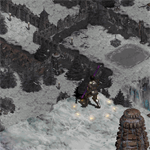
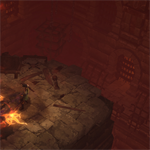
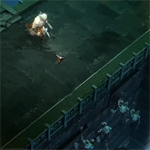
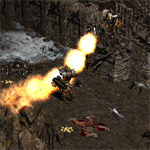
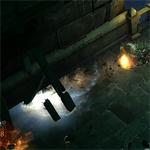
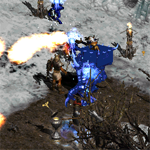
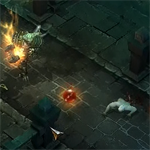
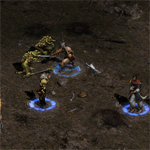
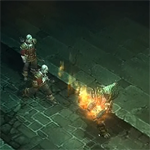
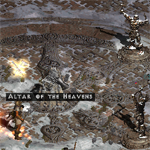
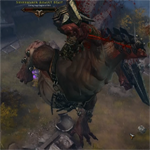
-
View User Profile
-
Send Message
Posted Mar 24, 2011-
View User Profile
-
Send Message
Posted Mar 24, 2011-
View User Profile
-
Send Message
Posted Mar 24, 2011In a bad way.
Ever through the first and second games you had the option to get the hell out of there with a quick tp, especially on bosses and enemies where I'm sure I used a whole damn book of those things. It's because of the tps that you can make more challenging encounters, knowing that players will have to escape more than once to refill their potions and come back swinging at full force. Even after going back, I always slapped down another portal, just in case.
Not to mention the gigantic amount of waypoints you will have to use to cover the whole game effectively and efficiently, without pissing higher levels off that they have to run through so much crap every time, and pissing lower levels off that the next waypoint is too damn far away, beyond that army of monsters which will kill them in a heartbeat.
I don't think you can take away tps and call it a diablo game. That's all there is to it.
-
View User Profile
-
Send Message
Posted Mar 24, 2011They will obviously adjust the monsters, health regen, ect. to adjust to the fact that you cannot refill at any moment. They cannot chase away casual players with so much difficulty that it's frustrating, not in this day and age. They will create the correct balance. I trust them......... kinda.
-
View User Profile
-
Send Message
Posted Mar 24, 2011To remove exactly this kind of approach to boss encounters they removed the Town Portals. They said (and i very much agree) that a "challenging boss" in Diablo 2 was a boss with loads of hit points and almost instant kill abilities that had the player drink loads of potions, stack up life leech and escape to town for refills. That's not how bosses are supposed to work and that's not how bosses will be in Diablo 3. We'll have to use some sort of tactic, avoid the special abilities and use health globes (potions are on a cooldown so 1-2 per boss fight at maximum) when they're most effective.
With a static outdoor world, we shouldn't have any trouble to find the Waypoints quickly. That's one of the things i'm not really worried about. Again, about having to kill hordes of monsters... using some sort of tactic will do wonders. And if we're too low on health, we can always run to the previous Waypoint or pop a potion to kill the monsters we have ahead.
I also think you can call Diablo any game that... has Diablo as a lore character. Even a RTS in Sanctuary with Nephalem, High Heavens and Burning Hells as factions would be Diablo. Well, at least to me. :cool:
-
View User Profile
-
Send Message
Posted Mar 24, 2011-
View User Profile
-
Send Message
Posted Mar 24, 2011It's what made diablo a little more unique to me. The monsters and bosses, while you could kill hundreds with a single skill still presented a scary enough threat to you that you would avoid getting hit like the plague(zombies. Which would also kill you :D). I can see each class' mobility skill being their answer to removing the escape mechanic that was tps, but I hope they retain that sense of everything is trying to kill you, and will totally succeed if you can't get away. Basically, no wizard tanks unless they are specifically built that way.
No potions anymore. They basically gave us a permanent chance on death life leech with hp globes from dead monsters. So you have to kill to live longer.
-
View User Profile
-
Send Message
Posted Mar 24, 2011I always felt a sense of excitement when doing the Ancient quest in LOD because I would be asking myself "Am I ready to take these guys on?" especially in Hell diff.
TPs worked for D2 but I don't think they would be cool for D3.
-
View User Profile
-
Send Message
Posted Mar 24, 2011-
View User Profile
-
Send Message
Posted Mar 24, 2011Wasnt the fetisch-thingys in 2 stages when small ones carried the firebreathing chief in each little tribe in the flayer jungle?
-
View User Profile
-
Send Message
Posted Mar 24, 2011-
View User Profile
-
Send Message
Posted Mar 24, 2011-
View User Profile
-
Send Message
Posted Mar 24, 2011True and something I honestly forgot. However, thinking about it, act v added something unique in that the monsters existed independently from each other. The shamans in act 2 always had a fetish carrying them around. in act v, the imps could fight on their own and even had a different attack when separated. in act v, the siege beasts would also attack you independently and the towers added some strategy as you had to destroy them before the imp would jump on top of it.
-
View User Profile
-
Send Message
Posted Mar 24, 2011*act 3
wololo!
Anyway, cool article! On the topic of TP's; I believe they removed them in an attempt to promote a more fluent runthrough of the 'stage'. In Diablo II (and I) I would often find myself having tons of fun slaying monsters only to be forced to stop the fun, and crawl back to town for pots and unload some equipment - it really took momentum out of the game and snapped me out of my crazed bloodlust (that's a bad thing ;)).
-
View User Profile
-
Send Message
Posted Mar 24, 2011An overview of the way WoW adapted D2(x)'s mechanics would also be interesting.
-
View User Profile
-
Send Message
Posted Mar 24, 2011-
View User Profile
-
Send Message
Posted Mar 24, 2011You guys cover like 99-100% of Diablo, very nice article. Love the read!
Sorry bout my fingerpoiting :wacko:
-
View User Profile
-
Send Message
Posted Mar 24, 2011-
View User Profile
-
Send Message
Posted Mar 24, 2011Please god yes.
-
View User Profile
-
Send Message
Posted Mar 25, 2011Like .. (Joke..)
"What kind of "one big" secret mission should be in D3?"
"Kill the threat in Unicorn Hills"
"The curse of the Wanderer"
"Torchlights End"
"Corrupted Angels"
"Into the Abyss"